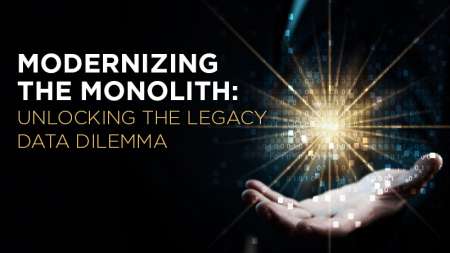
Federal agencies deliver on a wide breadth of missions–from protecting the environment to promoting job creation and economic growth to keeping citizens safe. Regardless of their mission, agencies share similar “behind-the-scenes” needs. They all need to pay employees, acquire goods and services, and manage their budgets.
Over time, this model has led to a blossoming of siloed solutions and billions of dollars in overspending. But the heavy focus on IT modernization now underpinning much of agencies IT strategy and spending has many turning to shared services to lower costs and improve efficiency.
According to the CIO Council’s 2017 State of Federal Information Technology report, “the goal of shared services is to efficiently aggregate resources and systems to improve the quality, timeliness, and cost effectiveness of service delivery to customers.”

According to the report, adopting shared services will not only reduce spending, but also improve services across agencies. “By leveraging government wide economies of scale, agencies can reduce administrative burdens and increase collaboration, allowing more time to focus on core mission functions,” the report said. “Furthermore, intra-agency shared services can also be impactful in improving mission function, reducing costs, and increasing collaboration across an agency.”
Using a shared services model to focus government resources on fewer systems and more standardized services will result in a more consistent and secure operating environment, while also improving both the quality and agility of administrative services, said Shaun Donovan, the previous director of the Office of Management and Budget, in a memo to agency heads. Considering that the President’s Management Agenda, MGT Act, and President’s IT Modernization Report all stress the importance of shared services, agencies are investigating many different shared services models.
Jim Williams, partner at Schambach & Williams Consulting and former acting administrator of the General Services Administration (GSA), stressed that fostering a competitive marketplace is also key to achieving greater efficiencies through shared services.
“With shared services, you eliminate every agency having to do common administrative services themselves in a way that’s competitive and improves efficiency,” he said. “Leveraging the private sector in this process is also very important.”
How Can Agencies Use Shared Services?
In terms of how individual agencies can best use shared services, David Egts, chief technologist for U.S. Public Sector at Red Hat, shared his advice.
“Ensure that the services are as automated and self-service as much as possible,” Egts explained. “Adding the human to the loop slows mission response time and introduces the opportunity for human error which can lead to outages and security misconfigurations.”
Egts agreed with Williams’ focus on keeping shared services competitive. Egts zeroed in on the importance of open source in a competitive marketplace.
“Standardize on commercially supported open source software,” he said. “This increases portability, lowers exit barriers for agencies, and creates a financial incentive for the service providers to deliver value or risk being replaced. This standardization also paves the way for multi-cloud deployments which enhance an agency’s security posture by making the applications attack surface amorphous as the workload can transparently move from provider to provider.”
Struggling to Share
The benefits of shared service models are well known in other industries, so why hasn’t the government made the move already?
“There is a fear of losing control when it comes to shared services–which I believe is an unwarranted fear,” Williams said. “People believe a task or service is going to suffer if they move it out of their direct control and give it to someone else. This fear of loss of control has led the government to be less efficient and less effective.” The latest report from MeriTalk discusses how Federal leaders look to modernize shared services.
GSA’s Unified Shared Services Management, which provides government wide leadership on moving to shared services, is attempting to combat that fear by making sure agencies have a seat at the table when shared services decisions are made. While an Executive Director leads the USSM, currently Beth Angerman, the rest of the office is compromised of a mix of USSM specific employees, as well as detailees from other Federal agencies. By including employees from other Federal agencies in the mix, other agencies can feel like their voice is heard and that they have a hand in the process. Ideally, this will mitigate lingering fears.
Keeping Options Open
In addition to addressing agency fears, those leading the shared services charge need to insure they keep the government’s options open. Egts explained that the government needs to avoid implementing features or solutions that are only available from one specific service provider.
“This prohibits agencies from having a choice of service providers resulting in vendor lock-in,” Egts explained. “This is particularly true with cloud service providers as clouds can be the mother of all lock-ins. Standardizing on commercially-supported open source software can insulate agencies from service providers by creating an open substrate for portability from one provider to another.”
Additionally, even though government is contracting out to the private sector for shared services, Federal leaders need to realize their responsibility for the solutions. Egts breaks down who is responsible for what when it comes to shared services.
“Ownership is shared between the service provider and the end user,” he said. “It’s up to the service provider to ensure that the services are available, updated, and secure, and it’s up to the agency application owners to secure and maintain the last mile where the service provider’s responsibility ends and the agency’s begin.”
What Egts is hinting at is something more than responsibility–its accountability. Where does the buck stop when something goes wrong? This concern was echoed in the CIO Council’s 2017 report by an anonymous agency CIO, “Providing a shared service can be a potential liability… It becomes your fault if something goes wrong. There’s lots of responsibility that goes beyond your agency’s mission if you are a shared services provider.”
And, that’s the rub in shared services. Everybody loves a common recipe–but if there are too many cooks in the kitchen, who’ll eat the cake?
